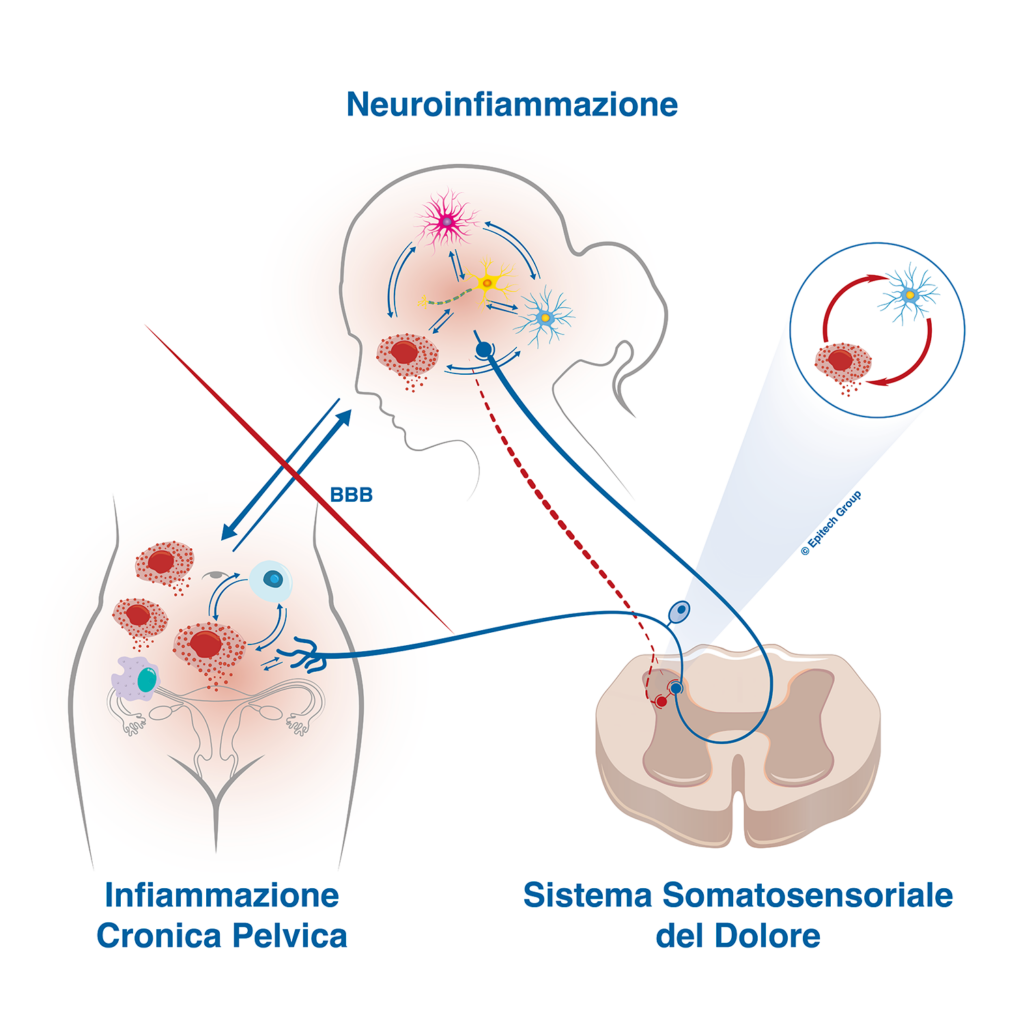Research for an innovative approach to women's psychophysical health
In women, chronic pelvic pain is often associated with dysfunctions of the lower urinary tract, pelvic floor and reproductive system, conditions that can have a negative emotional impact on many women and affect their everyday lives.
Chronic pelvic pain syndrome (CPPS) refers to a broad spectrum of symptoms involving both the peripheral and the central nervous systems.
This condition is caused by a combination of neuropathic, muscular, inflammatory and visceral factors. Neuroinflammation is one of the key mechanisms and fuels pain even when there is no obvious cause. Immune mast cell activation in the pelvic tissues favours peripheral nervous sensitisation. If the stimuli are intense or protracted, the process may also hyperactivate the spinal microglia and cause central neural sensitisation.

Schematic representation of the main factors contributing to persistent inflammation common to chronic pelvic pain and mood disorders such as anxiety and depression.
By physiologically and contemporarily modulating non-neuronal cells, the ALIA mechanism gives us an innovative way to control the peripheral and central sensitisation that underlies chronic pelvic pain syndrome (CPPS).


